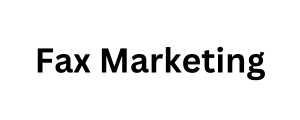In today’s digital age, email marketing has emerged as a potent tool for businesses to connect with their target audience and drive engagement. Central to the success of any email marketing campaign is the quality and relevance of the email list. Importing and exporting email lists securely is of paramount importance to safeguard sensitive customer information, maintain trust, and comply with privacy regulations. This article outlines the process and best practices for securely importing and exporting email lists. 1. Data Privacy and Compliance: Before embarking on any data transfer, it’s essential to be well-versed with data protection regulations like the General Data Protection Regulation (GDPR) and the California Consumer Privacy Act (CCPA). These laws dictate how personal data should be handled and transferred. Ensure that your email list adheres to these regulations, obtaining explicit consent from individuals before adding them to the list.
Data Encryption Encryption is a fundamental aspect of data
Security during transit. Use protocols like Secure Sockets Layer (SSL) or Transport Layer Security (TLS) to encrypt the data while it’s being transferred between systems. Encryption ensures that even if intercepted, the data remains unintelligible to unauthorized parties. 3. Secure File Raster to Vector Conversion Servicev Formats: When exporting or importing email lists, choose secure file formats like CSV (Comma-Separated Values) or JSON (JavaScript Object Notation). These formats maintain data integrity and are less susceptible to corruption or manipulation during the transfer process. 4. Use Secure Transfer Protocols: Employ secure transfer protocols such as SFTP (Secure File Transfer Protocol) or SCP (Secure Copy Protocol) when moving email lists between systems. These protocols add an extra layer of security by encrypting the data and providing authentication mechanisms. 5. Two-Factor Authentication (2FA): Implement 2FA for accessing systems or platforms involved in email list management.
This ensures that even if someone gains access to the primary login credentials
They cannot proceed without the secondary authentication method, reducing the risk of unauthorized access. 6. Regular Data Cleansing: Before importing an email list, perform thorough data cleansing. Remove duplicates, outdated or inactive email addresses, and incorrect Fax Marketing formatting. This not only enhances the accuracy of your email list but also reduces the chances of sending messages to incorrect or non-existent addresses. 7. Third-Party Vendor Due Diligence: If you’re utilizing a third-party service for email list management, carefully evaluate their security measures. Ensure that they follow industry best practices, have robust encryption protocols, and a proven track record of data security. 8. Data Mapping and Validation: When importing email lists, verify that the data is accurately mapped to the appropriate fields in your email marketing platform. This prevents the accidental exposure of sensitive information and maintains data consistency.

